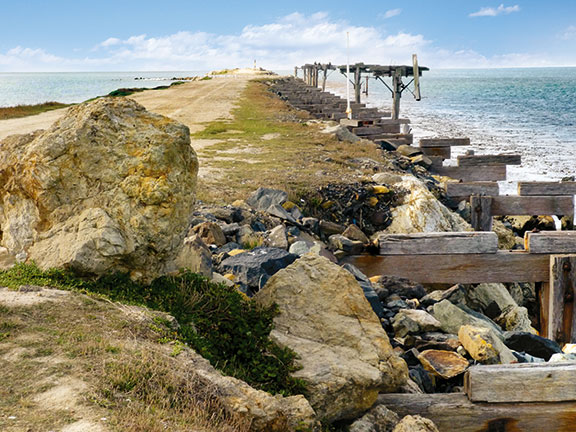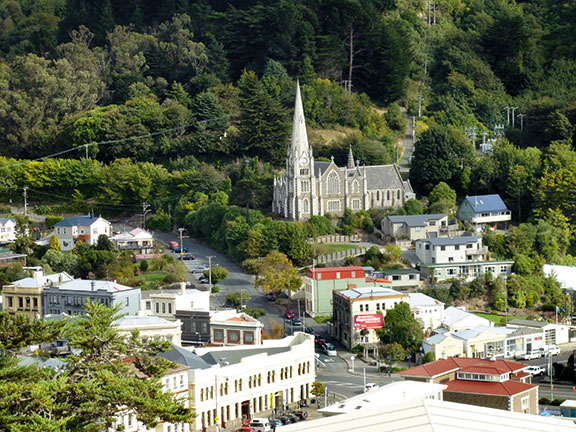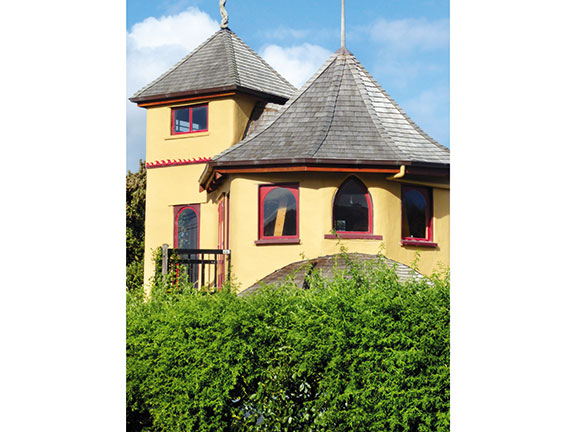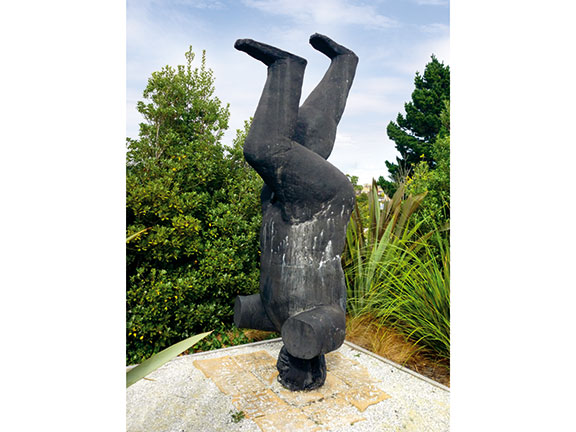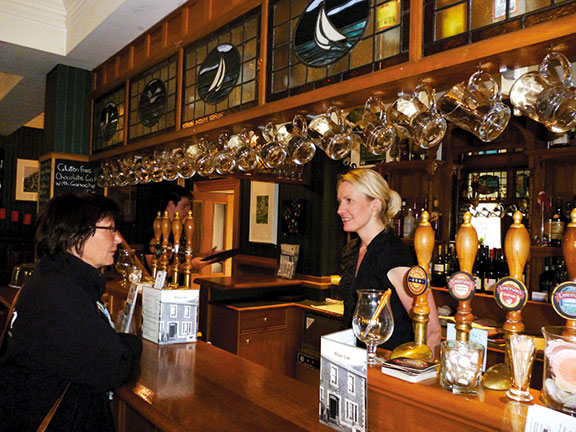At midday the storm had lapsed into a soft drizzle but in the bar of Mackie's pub, also known as Black Dog, was cosy and crowded. This flat-frontage, three-story hotel in the main street of Port Chalmers has been the locals' favourite watering hole for the last 150 years. Older portsmen with time enough to while it away were solidly settled. They eyed me, not with hostility but with a look that said, "What are you doing on our patch?" From behind the bar, the maid's gaze gave me the same message. On a board at the end of the bar hung rows of beer handles with the name of their users printed beneath each one.
"Those your regulars?" I asked her.
"Yep," she said. "Top two rows are dead. Now were startin' on the third." She obviously kept her boys in line.
I would have liked talk to those among the living to find out how things are in Port Chalmers these days. There's no doubt it's changed. The last time I was there, and it wasn't so long ago, it was a sorry place — decrepit and neglected looking, its businesses and shops closed up, paint peeling off walls, mortar chipping off the solid bluestone buildings. There was nothing much to go there for then, except perhaps the splendour of the sky-piercing steeple atop the elegant Iona Church, and the comings and goings of the container ships loading and unloading at the wharfs.
This time the little town the locals refer to simply as 'Port' surprised me. Scrubbed and spruced up, it has sprung to life. Fine old colonial buildings have been revamped and put to use as cafes, craft and antique shops, restaurants, art studios and galleries and music venues.
Some have kept their old use and perhaps best loved of these is the bluestone fisherman's pub at Careys Bay. The Carey's Bay Hotel was built in 1847 by the then mayor of Port and for 100 years it was known as The Crescent Hotel. After years of unsympathetic makeovers, the hotel fell into the hands of the late Cushla Martini, who enthusiastically forged a massive restoration project. Carey's Bay is still home to a small fleet of fishing boats, but it's now the hotel that brings the crowds. Motorhomers can park overnight in the sizeable car park, and although it's preferred that owners have at least a drink in the bar, it is not a pre-requisite.
We had a memorable lunch. In the main bar there are two cosy fires for winter months but the drizzle had ceased and we sat in the conservatory, which the weak sunlight was beginning warm. Often locally caught, the seafood on the menu was some of the best this side of Stewart Island. I chose the shellfish bowl of queen scallops, New Zealand green-lipped mussels, Otago clams and Tuatua, which were in white wine, cream, ginger, and coriander sauce. I still get hungry when I think of it. My friend had salmon steak baked in teriyaki sauce.
Motorhomers can also stay in a small hard-stand on the shoreline a few kilometres away at Deborah Bay. Fishers will get hooked here as the bay is renowned for salmon fishing.
At Sawyers Bay, on the other side of the town, a trust run by volunteers raises baby salmon in a hatchery which was once a sewage treatment pond. Around 100,000 fry a year are released into the Leith River to make their way to the sea. Three years later, full-grown and fattened, they return to the Otago Harbour to challenge the skills of recreational fishermen.
Many buildings in Port Chalmers and Dunedin are built of Port Chalmers bluestone (brecia), which was gouged from a quarry just behind the town. The quarry closed in the 1920 and was used as a tip for timber off container ships until a mayoress of Port, Lady Thorn, hit upon the idea of turning the area into a dell of rhododendrons. The local Lions Club picked up the project and now at the right time of the year this great hollow beneath towering cliffs is a blaze of colour. At its rear, steps lead up to a lookout over the village and the port. There is another good view from Observatory Hill, where I spent a half hour fascinated by logs being loaded onto a container ship and people streaming in an ant-like line from the bowels of a passenger liner. Thirty-seven cruise ships tied up here last year to spend their last day before departing New Zealand. As with all ports, there have been many notable arrivals and departures here. Among the most famous is the SS Dunedin in 1882, which left for England with the first consignment of frozen lamb aboard, and in 1910 Captain Scott departed the Port on his expedition to Antarctica.
On Observation Hill is also a small sculpture park dedicated to one of Port Chalmers most famous sons, the late Ralph Hotere who lived and worked at Careys Bay. The few sculptures in the park were once in the garden of his studio.
There were more surprises when we drove along the narrow, winding, coast-hugging road that leads to Aramoana and the Otago Habour heads. On either side of the long jetty, known as the Mole, are two wide sandy beaches know as Big Beach and Shelly Beach. You have to be a masochist to immerse yourself in the freezing waters around the harbour, but the enticement of these beaches is their wide sandy shores and the wildlife that can pitch up there. If you are lucky you might spot seals, dolphins, sea lions, penguins, and varieties of seabirds around the Mole, or watch royal albatross taking off to the wind from distant Taiaroa Head across the water.
A short walk leads to a monument naming the victims of an incident in Aramoana that appalled the nation. Twenty-two years ago local loner David Gray ran amok and shot 13 of the little town's residents. While the taint of this horrifying event will never be forgotten, the village has settled back into a quiet and peaceful rhythm of life by the sea.
There are wide hard-surface areas right by the jetty and the beaches where certified self-contained RVs are welcome to park. We didn't stay there this time but we will when we can. Imagine waking up to see out of your window a yellow-eyed penguin waddling to the water, or an albatross gaining height above the headland and gliding out to sea.
For the latest reviews, subscribe to our Motorhomes, Caravans & Destinations magazine here.

The road to Milford Sound
Explore the awe-inspiring journey to Milford Sound through Fiordland National Park – from scenic DOC campsites and iconic hikes to wildlife cruises and luxury stays

